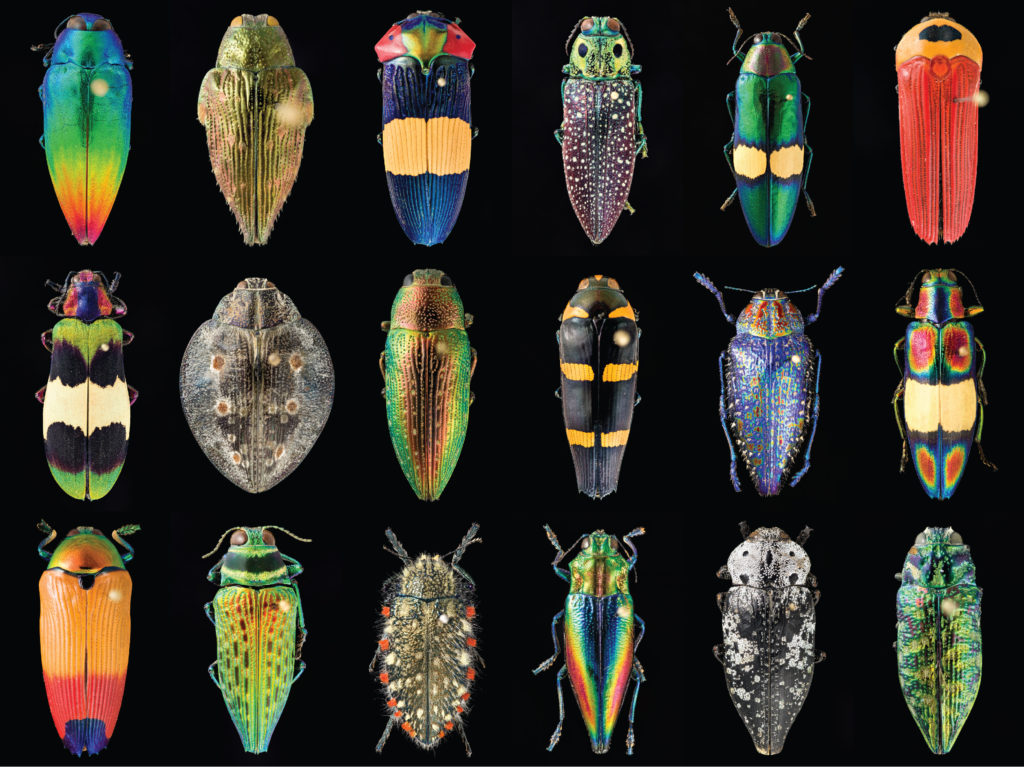Tuesday, October 13th
Virtual Zoom Meeting
07:30 PM
Join Zoom Meeting Here
Iridescent jewels: Integrative approaches to the studies of color in the beetle family Buprestidae
Nathan Lord
Assistant Professor
Department of Entomology, Louisiana State University

The role and importance of color and pattern throughout the animal kingdom is well known. Regarding biological utility, expression and perception of visual signals can change due to myriad reasons involving the light environment, the signaler, the receiver, or some combination thereof. In groups that are especially colorful or patterned, it is easy to reason that visual signals are under strong selection and therefore are ideal candidates for focused investigation of color production mechanisms, visual systems, and behavior. The definition and measurement of these elements, however, can both be objective and subjective, both maddening and beautiful. While the evolutionary significance of visual signals cannot be denied, standard taxonomic works rarely utilize such obvious and important, yet highly variable and seemingly subjective characters such as color beyond superficial levels. Here we demonstrate the measurement, integration, and analyses of various types of color data (reflectance and absorbance spectra, digital images and video, SEM/TEM images, etc.) for taxonomic utility under objective, repeatable frameworks. In addition to analytical pipelines, we introduce the Insect Color Database (ICDB), an online web portal for color data storage and analysis.
Nathan Lord received his B.S. (2006) and M.S. (2008) in Entomology from the University of Georgia, where he conducted morphological revisions and constructed molecular phylogenies of members of the Coccinelloidea. He then completed his Ph.D. at the University of New Mexico (2013), focusing his dissertation research on the tenebrionoid family Zopheridae and testing hypotheses relating to Southern Hemisphere biogeography. Nathan then shifted gears and completed a post-doc at Brigham Young University, where he investigated the evolution of color visual systems within the Odonata and beetle families Lampyridae and Buprestidae. Dr. Lord then spent two years as an assistant professor at Georgia College & State University before relocating to Louisiana State University in 2018. He is currently an Assistant Professor of Insect Systematics in the Dept. of Entomology at LSU and also serves as the Director of the Louisiana State Arthropod Museum. At present, he and his lab are investigating the development and function of color, both structural and pigmentary, in the jewel beetles.
In compliance with the COVID-19 social distancing guidelines, we are temporarily suspending all physical meetings and pre-talk dinner until further notice.
CEC meetings are normally held the second Tuesday of the month from October through May. The evening schedule typically includes an informal dinner (5:45 to 7:15 PM) followed by our formal meeting (7:30 – 9:00 PM). The latter begins with club business and is followed by a 60-minute entomology related presentation. Membership is open to amateur and professional entomologists.




